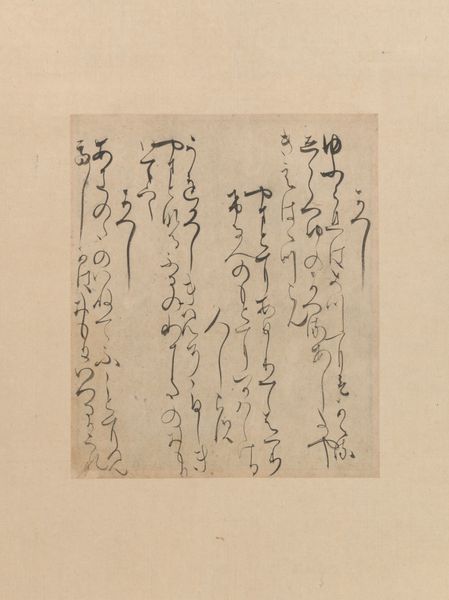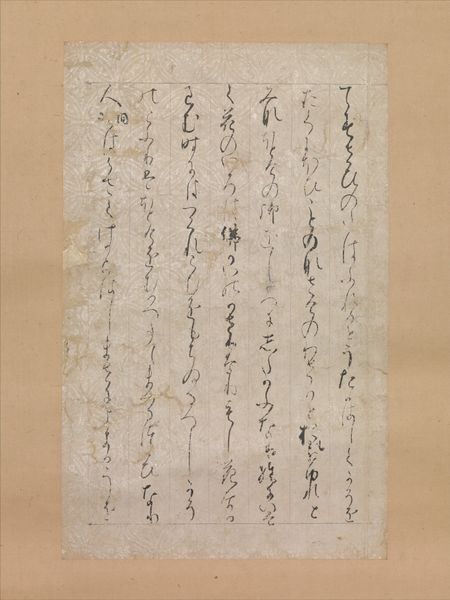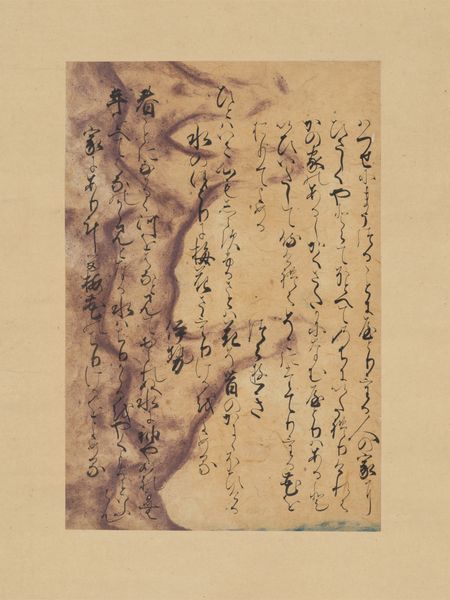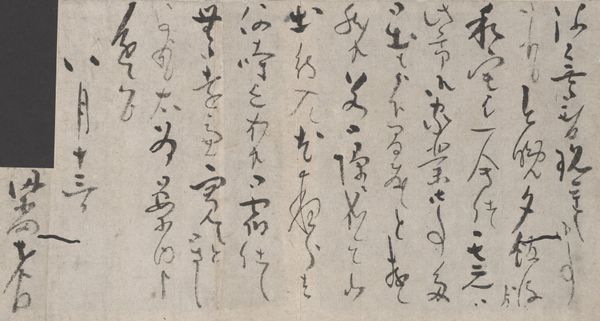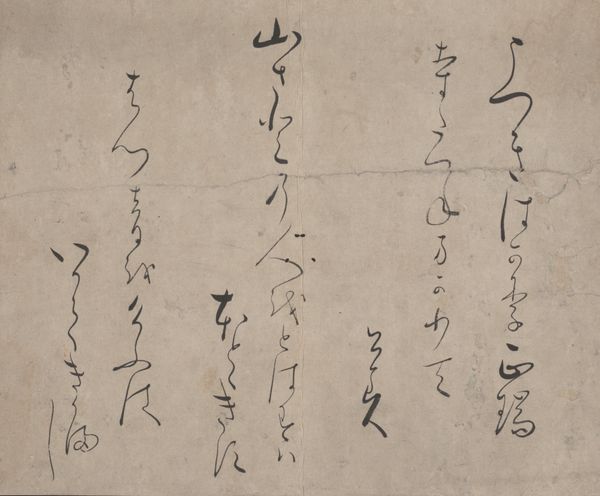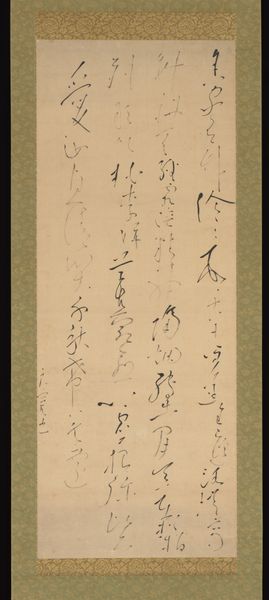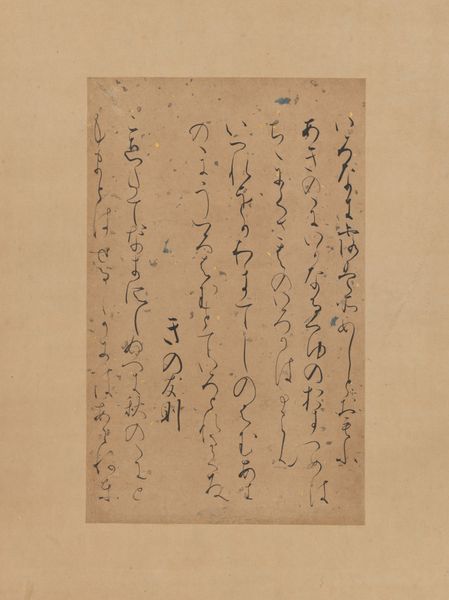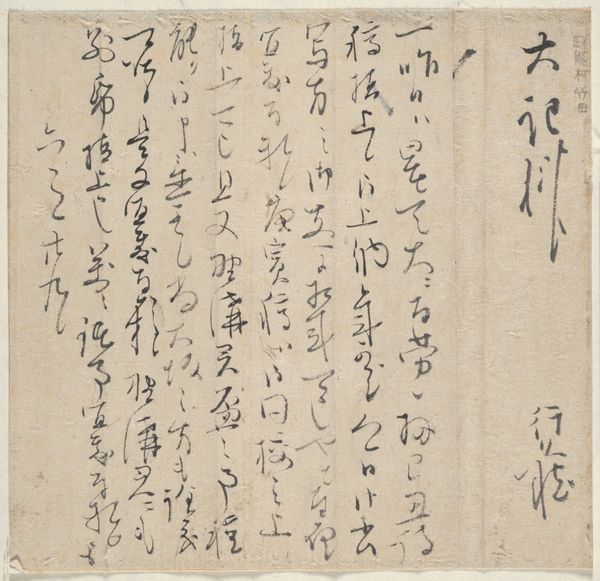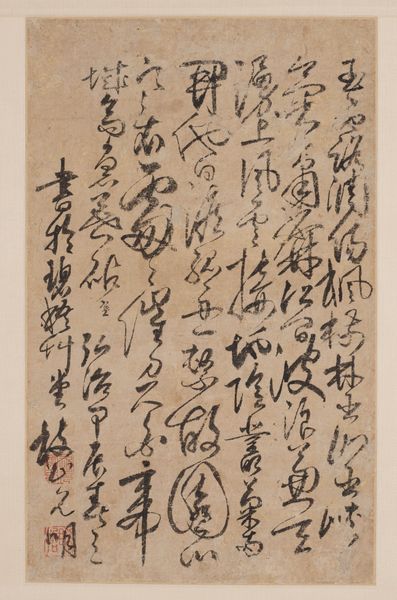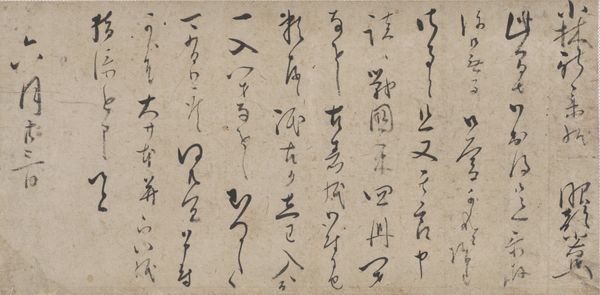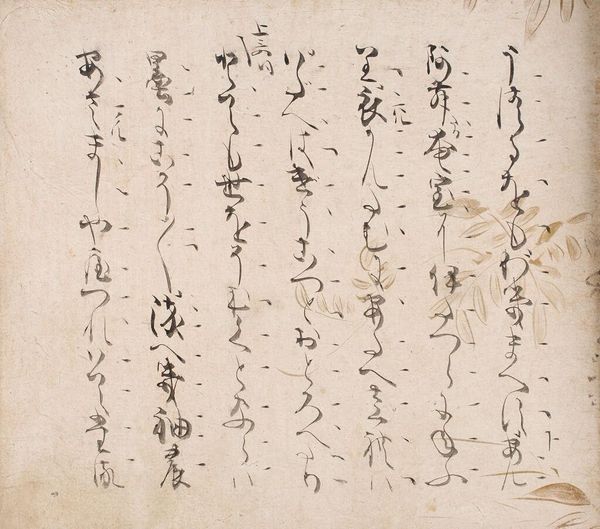
Three poems from the Collection of Poems Ancient and Modern (Kokin wakashū) 13th century
0:00
0:00
drawing, textile, paper, ink
#
drawing
#
medieval
#
asian-art
#
textile
#
paper
#
ink
#
calligraphy
Dimensions: Image: 9 3/16 × 5 9/16 in. (23.4 × 14.1 cm) Overall with mounting: 54 5/16 × 11 in. (138 × 28 cm) Overall with knobs: 54 5/16 × 13 3/8 in. (138 × 34 cm)
Copyright: Public Domain
Editor: Here we have *Three Poems from the Collection of Poems Ancient and Modern*, or *Kokin wakashū*, created in the 13th century and held at The Met. It's ink on paper. The fluid calligraphy is mesmerizing. What should we be seeing in this piece beyond just decorative script? Curator: This work represents more than just beautiful writing; it’s deeply embedded in the socio-political landscape of the Heian period in Japan, from which this collection originates. How do you think the act of selecting and preserving these particular poems in calligraphy reflects on the cultural values of the time? Editor: Preserving poetry implies valuing history, refined emotions, perhaps an elevated cultural status. Is it about consolidating power through artistic patronage? Curator: Exactly! Powerful figures like Fujiwara no Tameyori commissioned these works to not only showcase their refined taste, but also to reinforce their authority by connecting themselves to a rich cultural heritage. The choice of poems, the style of calligraphy, even the materials used—they all contribute to a narrative of cultivated power. Have you noticed how the aesthetic preferences and aristocratic values might affect whose stories were told and whose were omitted? Editor: That’s a great point! I hadn't thought about who was *excluded* by this display of high culture. So the beauty is almost…political? Curator: Precisely. It highlights how art, even seemingly "pure" forms like calligraphy, can serve as a tool for social distinction and the reinforcement of existing power structures. Understanding this reframes our perception of the artwork. Editor: I see that now! Looking at it again, it’s more than pretty writing; it is about cultural agency and authority. Thank you for clarifying! Curator: Indeed, and for realizing how relevant historic socio-political elements are to art appreciation!
Comments
No comments
Be the first to comment and join the conversation on the ultimate creative platform.
